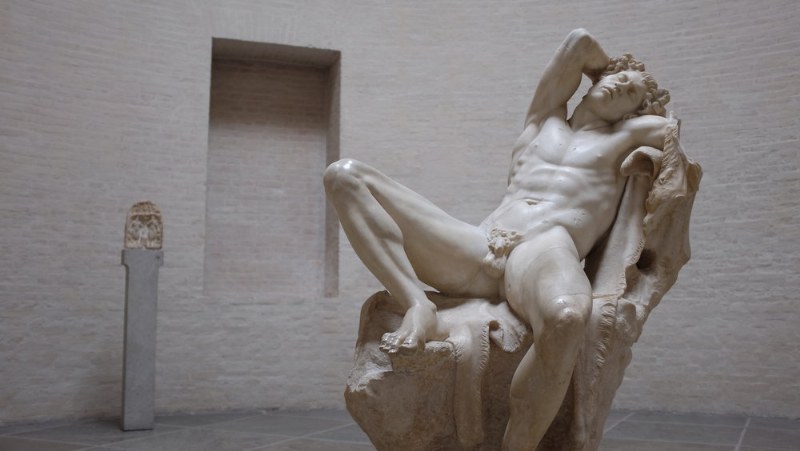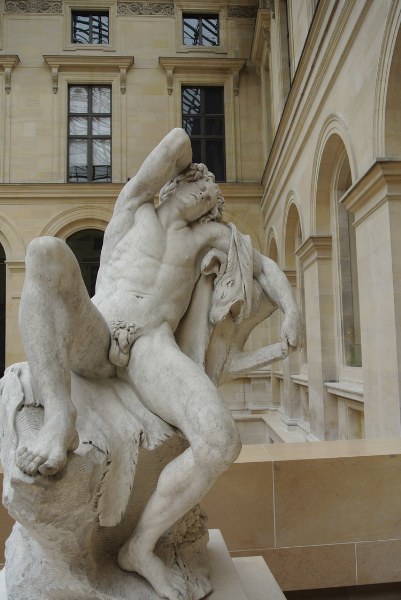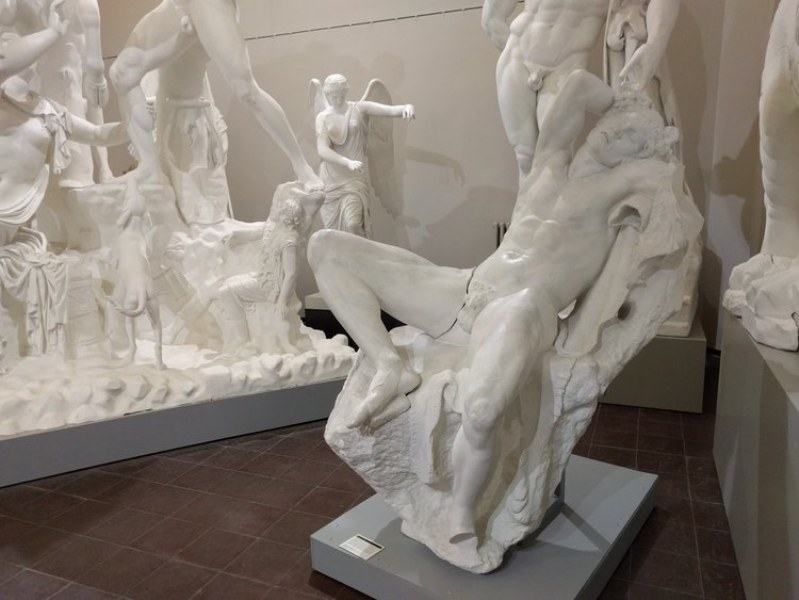Barberini Faun
 Barberini Faun
Barberini Faun
CAUTION! If you’d rather not or should not be looking at photos of nude male sculptures, turn back.
In 2012 we took our first international trip together and as part of that trip spent some time in Paris, France. Prior to arriving in Paris we had spent time in Rome and developed a minor obsession for the Italian sculptor, Gian Lorenzo Bernini. Bernini’s work adorns the streets of Rome with amazing fountains and his more delicate works filled the rooms of Galleria Borghese. As one does when in Paris we went to The Louvre and sculptures were on the top of the list for exhibits to see. One sculpture in particular stood out, Edmé Bouchardon’s Barberini Faun from 1762.
 Barberini Faun by Edmé Bouchardon, 1726
Photo taken on our 2012 trip to Paris, France.
Barberini Faun by Edmé Bouchardon, 1726
Photo taken on our 2012 trip to Paris, France.
After taking this photo and returning home, it was interesting to discover that the sculpture in The Louvre is a copy of a sculpture by the same name that is believed to have been completed in 220 BC. Wikipedia goes into a good deal of detail explaining what’s happened to this satyr over the past 2200 years, but the quick summary is as follows. It was completed sometime around 200 BC then around 500 AD it was thrown from a castle as a weapon in an effort to defend against a siege. It then spent 1100 years in the castle moat until it was rescued in the 1600s, since then it has been restored various times and changed owners nearly as frequently. All this knowledge of the sculpture sat dormant in our minds for over four years when, a few weeks ago, while exploring The Greek & Roman Plaster Cast Collection (Abguss-Sammlung Antiker Plastik) in Berlin, Germany, we came across a plaster cast of the 220 BC version of Barberini Faun.
 Barberini Faun, plaster cast, Abguss-Sammlung Antiker Plastik Berlin
Photo taken on our 2016 trip to Berlin, Germany.
Barberini Faun, plaster cast, Abguss-Sammlung Antiker Plastik Berlin
Photo taken on our 2016 trip to Berlin, Germany.
After seeing the copy at The Louvre and the plaster cast in Berlin there was only one logical next step and today that came to fruition. Today we got to visit the drunken satyr at his resting place inside the Glyptothek in Munich, Germany. This twenty-two hundred year old work or art, in all its forms (from plaster cast to original) captures the eye of the beholder with its unashamed posture and endless detail.
 Barberini Faun, c. 220 BC
Photo taken on our 2016 trip to Munich, Germany.
Barberini Faun, c. 220 BC
Photo taken on our 2016 trip to Munich, Germany.
We are two en route to appreciate the arts.
